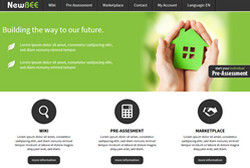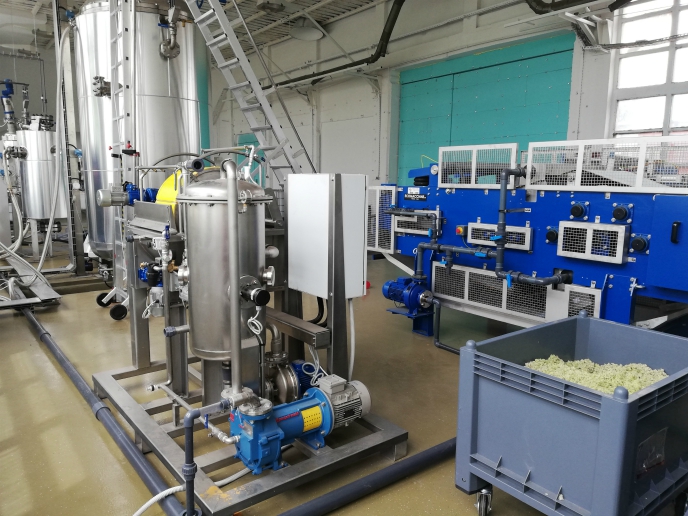Retrofitting the easy way thanks to new set of ICT tools
Completed at the end of September, the EU-funded NEWBEE(opens in new window) (Novel Business model generator for Energy Efficiency in construction and retrofitting) project proposes new performance-based business models which they hope can speed up the adoption of energy efficient solutions in buildings. Laura Garcia Zambrano, Scientific Researcher at Tecnalia and coordinator of the project, explains how the project’s new ICT tool will ease each step in retrofitting initiatives from comparing technologies to launching calls for tenders and awarding contracts. The implementation of a business model for the whole value chain is your main objective. Why do you think that’s necessary? New energy performance-based business models can increase the adoption of efficient solutions through cooperation between construction companies and SMEs specialised in retrofitting, energy service companies (ESCOs), public and private building owners, local administrations and financial institutions. In the construction sector, the successful implementation of these models depends on the entire value chain. In this context, the main innovative aspect of NEWBEE is the integration of all actors thanks to suitable methodologies for the new energy efficiency paradigm, supported by a set of web-based ICT tools. This will enable SMEs to compete with large contractors. Can you tell us more about the software solution you developed? Our technology is for both sides of the market: building owners (who are demanding retrofitting services) and SMEs (who are offering the retrofitting services). The NEWBEE platform includes a knowledge repository that provides building owners with information about the different retrofitting technologies and SMEs with competitive knowledge; a pre-assessment and a financial tool which helps building owners to evaluate the different technologies available in light of the specific problem they are facing and their financial constraints; a ‘marketplace tool’ enabling building owners to identify and launch calls for proposals and SMEs to find retrofitting opportunities; an energy performance assessment tool for SMEs offering a detailed assessment of the technologies and their cost for a particular problem; and a business model assessment tool that supports SMEs in improving their business strategy by allowing them to search for ideas and good business concepts and guiding them step by step. What kind of methods did you use to classify and evaluate existing technologies in a clear and coherent manner? Technologies have been classified according to various factors, ranging from their applications to elements such as energy required, materials, physical principles applied and performance. Classifying these technologies was a challenge, as SMEs need the system to work in a relatively non-scientific manner while answering the day-to-day challenges they face. Thus, the technologies are initially classified following the trades or assembly section of buildings (e.g. roof, façade). This is based on the German classification DIN276, which covers elements that are principally used for the structure and management of construction projects. Technologies were also evaluated by the SMEs involved in the NEWBEE project thanks to discussions and semi-structured personal interviews. The proposed scheme for evaluating the technology classification was composed of two sets of factors: The first set involved the structural and physical aspect of the technology, and the second set provided SMEs with information on the techno-economic feasibility of the selected technologies. What would be a typical use case for NEWBEE’s solutions? A typical use case for NEWBEE would be that of a building owner or community of neighbours requesting a retrofitting service covering every single stage of the process. This process starts with raising owner awareness about the benefits of energy-efficient retrofitting and available technologies to solve their problem. Once the building owner has all the necessary information, he/she can go deeper into the analysis of his/her own building and estimate the costs and possible financing options. After that the owner formally asks for proposals (offers) through the marketplace and identifies a construction company with a good reputation. That’s when SMEs come into play. They will study the proposal, create a team to offer a holistic solution and respond to the owner’s request. The SMEs will use the professional tools intended for them (the energy performance assessment tool) in order to make a more precise estimation of the energy performance of the building before and after the proposed retrofitting solutions. Also they will use the business model assessment tool to look for ideas for a good business model to propose to their partners. So SMEs were your main targets. How do you plan to attract them? Well, the strategy for attracting SMEs is quite simple. We first need to attract building owners with services of quality and make them free of charge. Some of the most powerful services developed in NEWBEE are intended for building owners (retrofitting knowledge repository, pre-assessment and financial tool) and we are confident that this will engage them to use the marketplace tool. If we succeed in this first step, it will then be easy enough to attract SMEs. The quality and quantity of owners requesting retrofitting offers will be our best commercial claim. How can stakeholders access your platform and what are the conditions? The platform is currently in the pre-commercial stage and therefore is not yet accessible for the market in general. However several commercial options are being discussed and considered: We will have to take into account the fact that the platform offers services adapted to the climate and the financial options of each country and region, and therefore that the tool has to be adapted (populated, parameterised) for each country/region. As we have already explained, the services intended for building owners will be free of charge, but for SMEs different commercial and price policies can be considered. The first one is a one-time fee (pay-per-use) system where the SME is charged every time its staff uses the platform. This is the preferred option for those clients who want to explore NEWBEE premium options such as the marketplace. But there are other options: a yearly subscription, a fee applied when a business opportunity is accepted (pay-per-success), and a license for third parties who want to install, localise and run the platform in a specific country (it could be a one-time licence or one-year licence). Unlike the previous options where the NEWBEE partner running the platform charges a fee, this option sees software owners sell a license to a third party who will then run the platform in a certain country.







